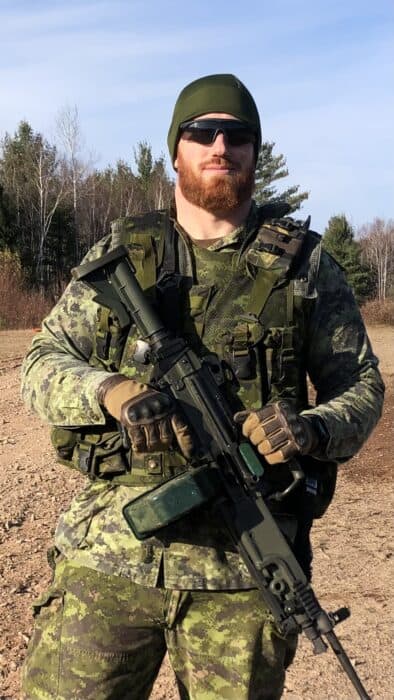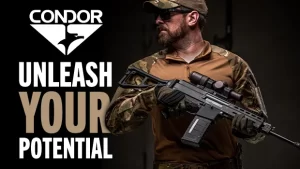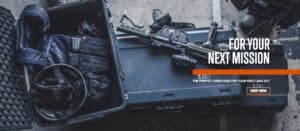TacticalGear4Life is supported by its wonderful audience. When you make a purchase through our links below, we may earn an affiliate commission.
WHAT IS AN IFAK
IFAK is an acronym for “Individual First Aid Kit”. IFAK’s are specialized and essential pieces of tactical medical gear whose scope reaches far outside that of the tactical community, from soldiers in war to the average suburban home. To put it simply an IFAK is a first aid kit on steroids.
Created for our frontline war fighters IFAK’s have been issued individually to soldiers as far back as WW2. IFAK’s are compact, lightweight trauma kits designed for use by individual soldiers. They are typically carried on the soldier’s person and contain the minimum essential medical supplies needed to treat injuries in the field.
TABLE OF CONTENTS
These kits are designed to be quick and easy to use, and although their contents are often customized based on the specific needs of the user, they generally contain severe trauma-specific equipment.
IFAKs give soldiers the ability to apply first aid to themselves or buddy aid to a fellow soldier to a much greater degree than a typical boo-boo kit would ever allow.
When you or someone you care about is injured an IFAK is your best friend.
WHAT ARE THE DIFFERENCES BETWEEN IFAK’S AND STANDARD FIRST AID KIT’S?
When it comes to preparing for emergencies, it’s important to have the right tools on hand. While these two kits share some similarities, there are some key differences between them. The main differences between an IFAK and a first aid kit are:
- Intended Purpose
- Medical Equipment
- Size
- Container


INTENDED PURPOSE
The main purpose of an IFAK is to provide essential care quickly, with the ultimate aim of preserving life and preventing further injury. Created to handle critical life-threatening injuries such as gunshot wounds, stab wounds, shrapnel and other major trauma incidents. IFAKs were created for soldiers fighting on the frontlines.
Created and intended to handle very basic and superficial wounds, first aid kits are great for injuries such as scrapes and scratches. They are what you would have at home to treat a child’s scraped knee or rug burn, or in your workplace to deal with any general work injuries.
MEDICAL EQUIPMENT
A big difference between a first aid kit and an IFAK will be not only the type of medical equipment they carry but the amount as well.
The medical equipment in the pack will partially be determined by the size of the pack, but will primarily be determined by the purpose of the pack.
IFAK’s which are designed with a very narrow scope and purpose in mind, typically contain a limited variety of medical supplies.
These are chosen by the operator specifically to address the most likely serious injuries sustained in combat or whatever extreme activity they’re doing.
First Aid Kits, on the other hand, are designed to address a wider range of injuries and medical emergencies. The equipment in a first aid kit will range from the simplest bandaid to generally lower-end trauma supplies.

Probably the biggest difference in the kit will be items like hemostatic agents, quick clots, and tourniquets. Items which use the military’s motto of “Life over limb”.
These items will help keep you alive, and are invaluable, but can also cause damage to you if not handled correctly.
SIZE
One of the biggest differences between an IFAK and a First Aid Kit is their size.
First Aid Kits have no designated size. They can be pocket size or they can be massive backpacks. Since the need to be carried around isn’t part of their prerequisite, the size purely matches the need of the individual using it.
IFAKs are designed to be compact and lightweight, making them easy to carry on the person. This is important for soldiers and any individuals who may need to move quickly and or carry a lot of other gear.
CONTAINER
The container first aid kits and IFAKS come in can also be drastically different and I would say most of the time they are.
IFAKs almost always come in little MOLLE-compatible cordura nylon pouches. Due to the nature of IFAKs and the fact that they will be carried everywhere they go, IFAKs must always be small and compact.
The containers they come in must be extremely durable and must be able to be carried anywhere on a person’s load out.

First aid kits most commonly come in plastic or metal square box-like containers. This style is what we have in all our hangers on the walls, it’s what we toss into our armoured vehicles, it is what most people have in their homes, and it’s what most regular offices have in their break rooms or bathrooms.
However, although, commonly, first aid kits come in this style of packaging, they do come in others.
First aid kits can also come in carry bags or even backpacks, they are generally much larger as they carry a much wider variety of medical equipment.
WHAT WILL YOU FIND IN A FIRST-AID KIT
Although there is no hard and fast rule about what exactly you’ll find in a first aid kit, there are some more standard items that generally every first aid kit will have for it to be a useful and effective first aid kit.
- Adhesive bandages (Band-Aids) in various sizes
- Sterile gauze pads and adhesive tape
- Antiseptic wipes or solution
- Tweezers
- Scissors
- Disposable gloves
- Pain relievers (Ibuprofen or acetaminophen)
- Antihistamines for allergic reactions
- CPR face shield
If you want some ideas for a first aid kit check out MyMedic for 9 great options.

WHAT WILL YOU FIND IN AN IFAK
Similar to the first aid kits, there is no solid rule as to what must go into an IFAK. However, there are some pretty standard items that almost every operator’s IFAK will have in it. Items that make it truly a life-saving tool.
- C-A-T (Combat Application Tourniquet)
- Hemostatic agent (Celox or Quickclot)
- Emergency bandage (like an Israeli bandage or H&H Thin Fold Bandage)
- Trauma sheers
- S-Rolled or Compressed Gauze
- Disposable gloves
- HyFin Vent Chest Seal Twin Pack
- Nasopharyngeal Airway 28F with Lubricant
- Marker
- Medical tape

WHY YOU SHOULD HAVE AN IFAK OVER A FIRST AID KIT
SO….after looking at the intended purpose of IFAKs and now seeing generally what’s in an IFAK versus what’s generally in a first aid kit. Why would I and many others in the tactical community advocate for IFAKs over first aid kits as your standard medical tool?
PLAN for the WORST and HOPE for the BEST!

Everyone should have a couple of small first aid kits around the home. First aids kits are handy to take care of all the owies and boo-boos that kids will get as they grow and explore the beauty of God’s world.
As well as the potential accidents that can happen to parents and adults (I cut my finger chopping potatoes the other week, it was a pretty deep cut, but a couple of bandaids took care of it. I would not have wanted to break open my IFAK for it.)
When it comes to serious injuries, you want an IFAK. You NEVER want to have a medical emergency while in a tactical situation as a soldier or first responder, or someone dealing with armed intruders in their house, or just an adventurer in the middle of nowhere and be caught with just a first aid kit.
In these situations, you MUST HAVE an IFAK.
Be prepared…have an IFAK. Proper medical gear is just as important (if not more) as every other piece of tactical gear. You never know what is in store for each day, so make sure you always have one in a backpack or tucked away in your vehicle.
THE TACTICAL IMPORTANCE OF BASIC MEDICAL TRAINING
Having an understanding of basic medical training is extremely important in tactical situations, particularly in situations where professional medical assistance may not be immediately available or when resources are limited. Here are some of the reasons why:

- First aid skills can save lives: In tactical situations, injuries can occur quickly and without warning. Knowing how to perform basic first aid, such as stopping bleeding, clearing airways, or treating shock, can mean the difference between life and death for someone who is injured.
- Quick response: In some situations, such as in military or law enforcement operations, immediate medical response may not be available or may be delayed due to security concerns.
Having basic medical training can allow individuals to respond quickly and effectively to injuries or medical emergencies, potentially saving lives or minimizing the severity of injuries. - Resource conservation: In situations where resources are limited, such as in a disaster or emergency, having basic medical training can help conserve medical supplies and resources by allowing individuals to treat injuries or illnesses without relying on outside assistance.
- Situational awareness: Individuals with basic medical training can also be more aware of potential medical threats or hazards, such as environmental risks or exposure to infectious diseases, and take steps to mitigate those risks.
Overall, having basic medical training can be a valuable asset in a variety of tactical and survival situations, allowing individuals to respond quickly and effectively to medical emergencies and potentially save lives.
CONCLUSION
IFAK’s are an INVALUABLE piece of tactical gear that honestly every single person should have. No one is God and no one knows when a situation will arise in which you will need an IFAK.
What we do all know is that we never want to be caught in a situation where we or someone else is severely injured and we don’t have an IFAK handy.
First aid kits are good when they operate within their lane and everyone should have one at home for those minor injuries. When something big hits though, you need to be ready and that means having an IFAK.
Here are some of America’s best but more budget-friendly IFAKs:
- EVERLIT Emergency Trauma Kit
- Rescue Essentials – CBP IFAK 2
- EVERLIT – IFAK
- Grullin Survival – IFAK
- LIVANS – IFAK
Here are some of Americas all around best IFAK’s:
- MediTAC – Eagle Type
- Dark Angel Medical – D.A.R.K. Explorer Kit
- North American Rescue – Eagle IFAK
- MYMEDIC – MYFAK
- Rhino Rescue – IFAK
- Medical Gear Outfitters – Civilian Medical Trauma Kit
It is the responsibility of everyone to think, plan, and be prepared.
Hope for the BEST, PLAN for the WORST
TacticalGear4Life is reader-supported. Clicking on provided links and making a purchase may earn me a small commission at NO extra cost to you.




















